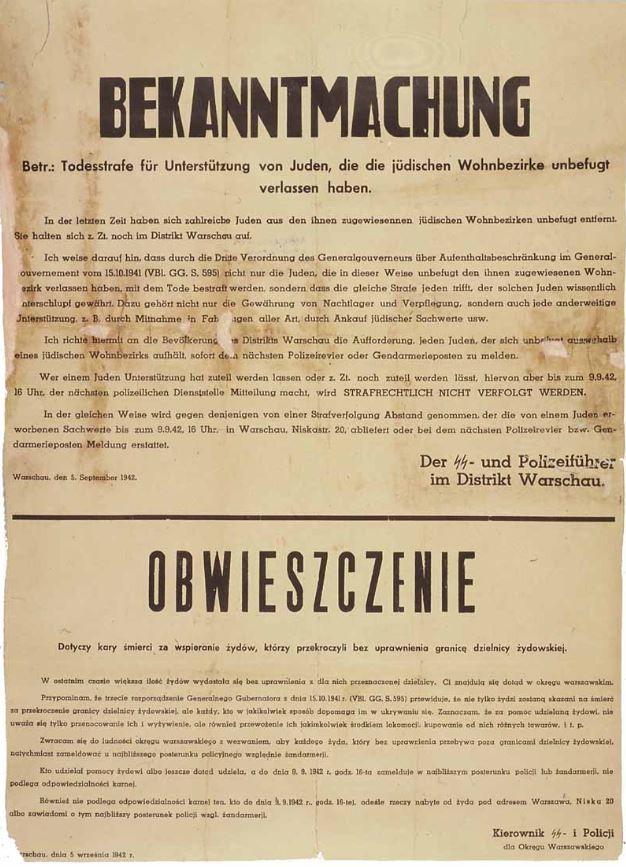On 15 October 1941, in occupied Polish territory, the Germans introduced a decree that threatened the death penalty for Jews residing outside the ghettos, as well as for Poles providing them with assistance.
After occupying Poland in 1939, the Germans incorporated part of its lands directly into the Third Reich. A General Government (GG) was formed from the remaining areas of the former provinces of Kielce, Lublin, Kraków, part of Warsaw and Łódź provinces. Adolf Hitler put Hans Frank in charge of this new administrative entity. Within this quasi-estate, the Germans consistently pursued a policy aimed at Germanising the population living there. Higher education was abolished and the GG population was to become a cheap, if not free, workforce. Property was plundered on a massive scale. From the beginning, Polish cultural monuments were destroyed or taken away.
In the areas occupied by the Third Reich, there were 61% of the Jews living in Poland before the Second World War. They became victims of the German racial policy, which aimed at their total extermination. It was implemented in stages. At the very beginning, the Nazis began to isolate the Jews from the rest of the population by resettling them in ghettos, or Jewish residential areas, as they were often called by occupation propaganda. The first of them, in Piotrków Trybunalski, was established as early as October 1939, followed by others. According to historians’ studies, the Germans created around 400 ghettos in the GG area. The conditions in them became worse and worse month by month, with widespread hunger, disease, which was the cause of the high mortality rate of the population, especially in Warsaw. All this caused many Jews to seek help from Poles on the so-called Aryan side.
15 October 1941 Hans Frank issued a decree that introduced the death penalty for Jews escaping from the ghettos, as well as for Poles giving them shelter. This decree was later clarified and tightened, and its widespread application came in 1942. Responsibility for assisting Jews also extended to, as the decree put it, “aiders”, which in practice meant responsibility for family members of persons giving shelter to the Jewish population.





